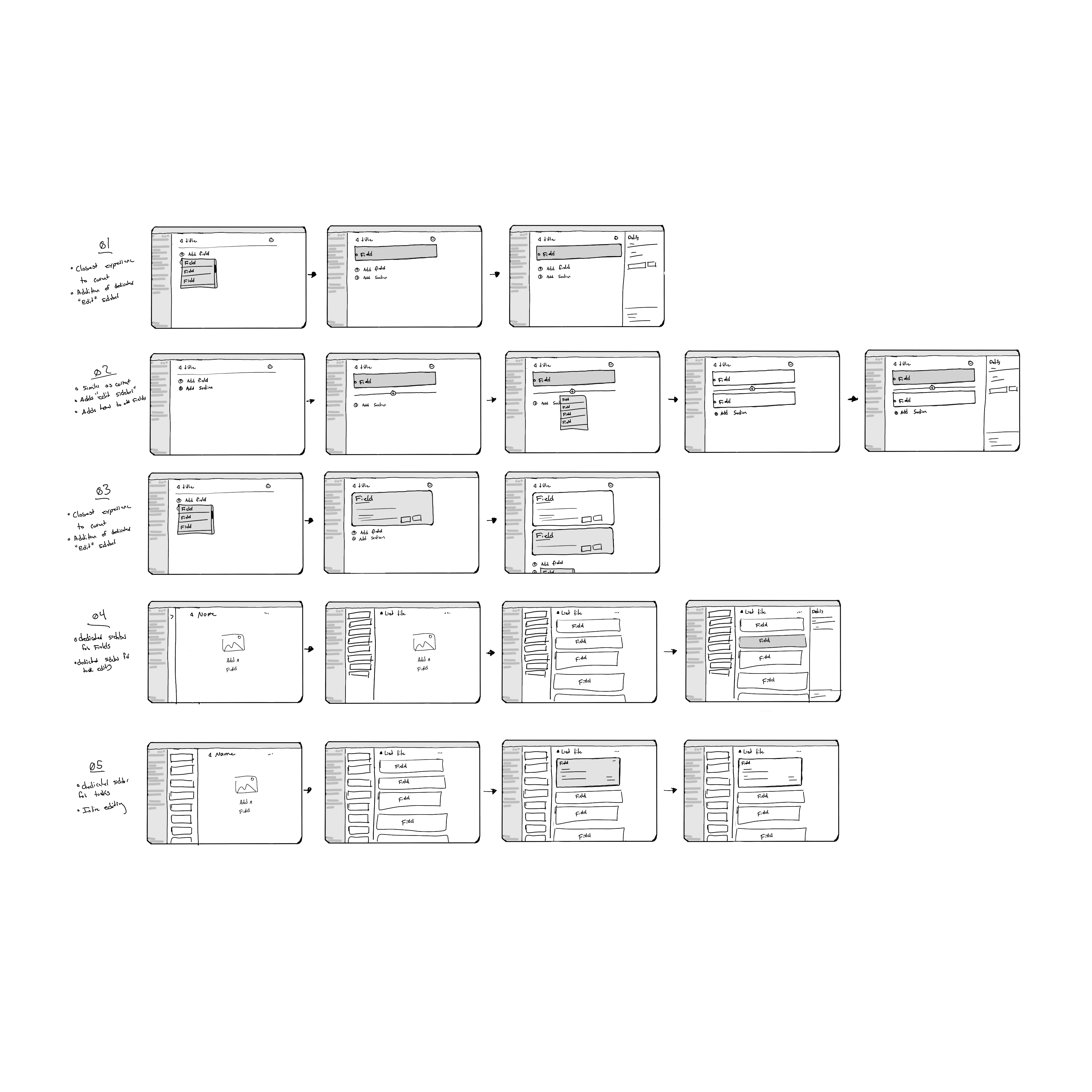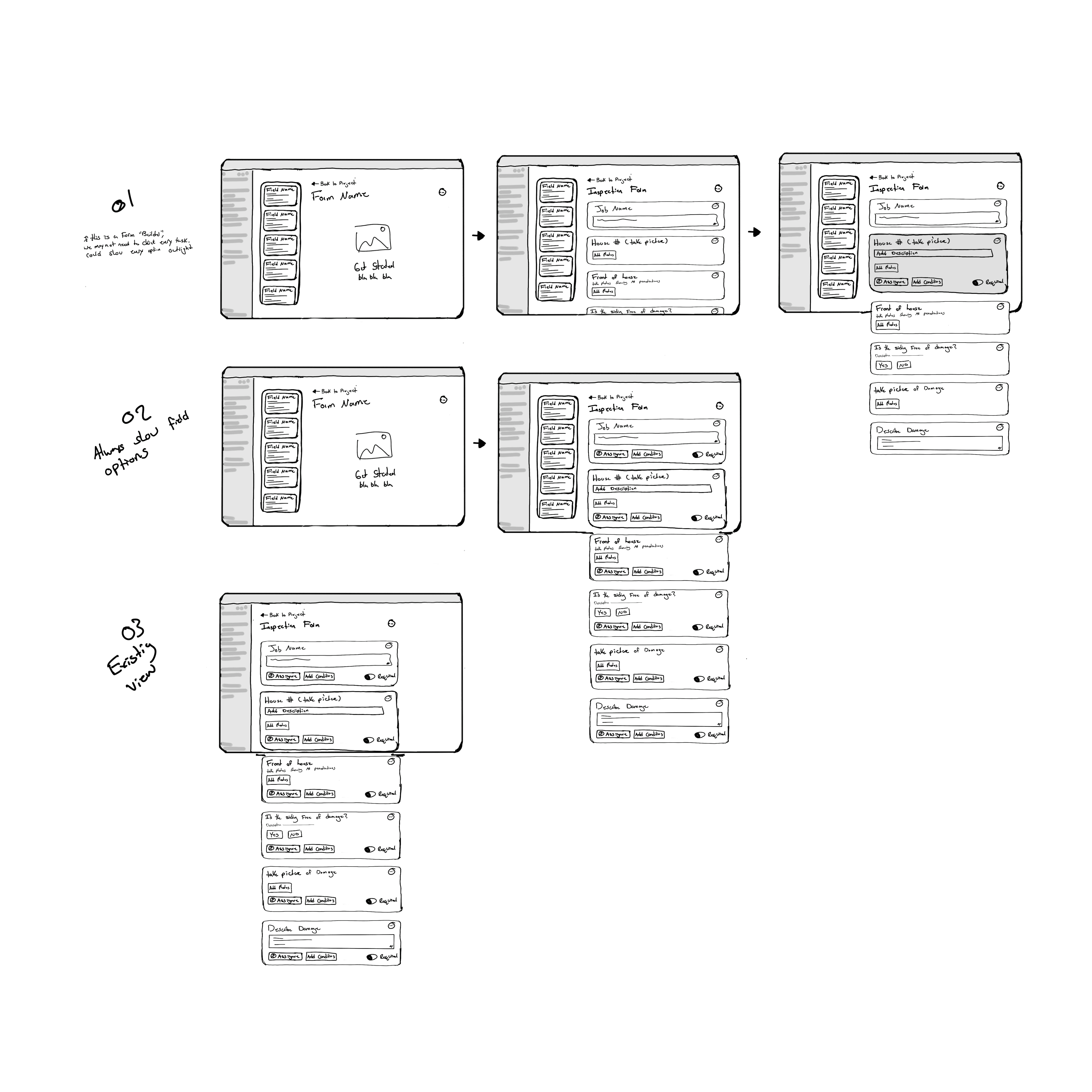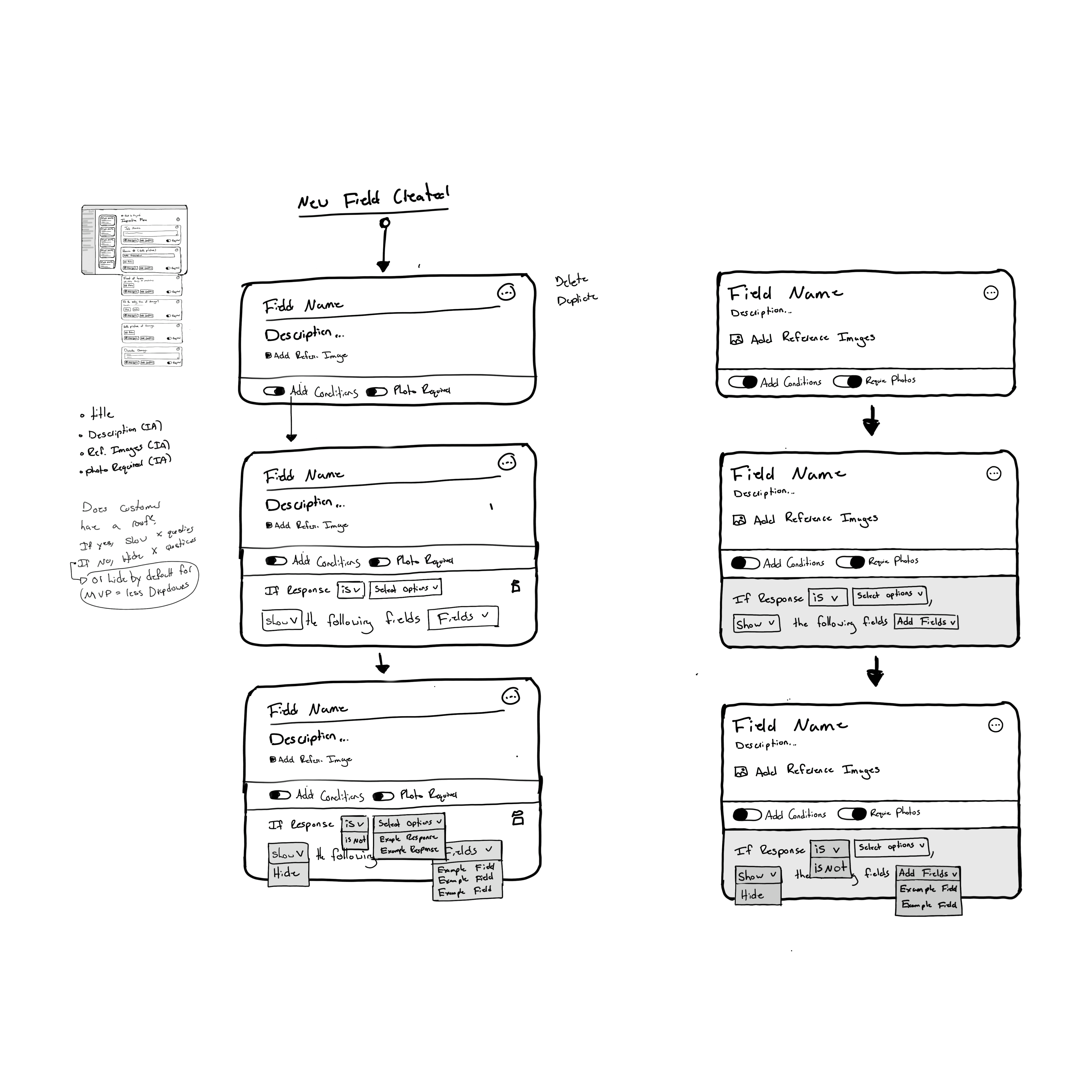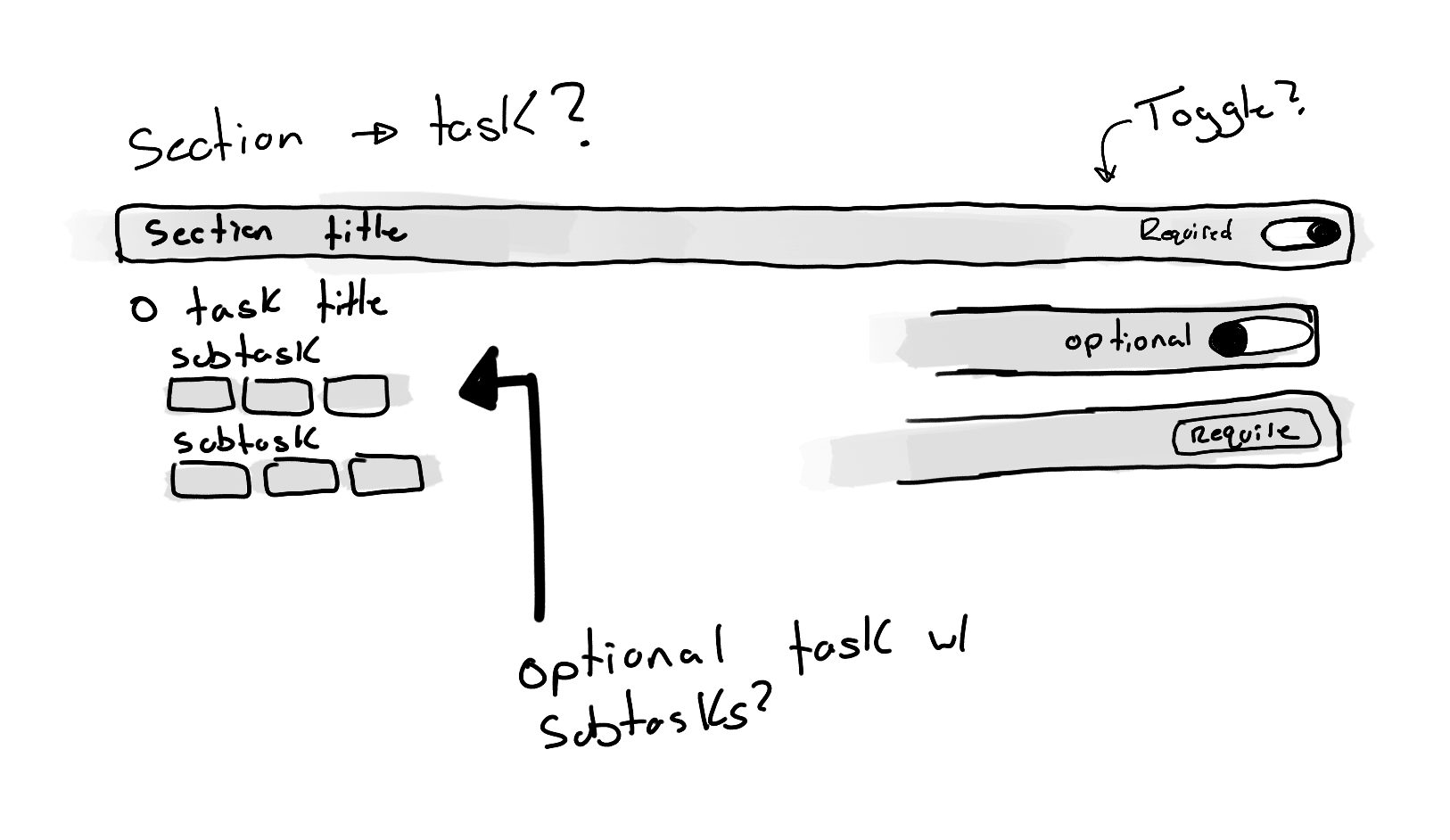Improving data accuracy and completeness in Checklists.
Platform
Mobile / Desktop
Role
Product Designer /Researcher
Delivery Time
6 Weeks


…They’ll [field workers] just put in a picture of a vent from one of the trucks, you know, because they have to put something in. My crews won’t get credit for the job unless it’s 100% complete.
There are very different types of homes and situations that we run into. And if we run into situation A, we need photos one, two, and three. If we run into situation B, we need one through four. And if we run situation C, we need three, six, and eight. And that's where the conditional logic would really, really help.
We want to be able to click something here to say close task complete even though with nothing available to it, like so that we can get to 40% no matter what without having to take pictures of our shoes and write a bunch of stuff here.
Not every project needs all the fields, so the crew either skips them or fills them with junk...

Office Manager
Responsibilities
• Keeping track of crew
• Communicating with clients
• Ensuring accurate information
Frustrations
• Struggles with clear communication between the office and field teams
• Finds it time-consuming to verify authenticity of inrofmartion provided by field workers
• Frequently has to manually correct or fill in missing data
Technical Proficiency
• Medium

Field Worker
(non-supervisor)
Responsibilities
• Completing tasks created in advance
• Communicating updates and changes to the main office/supervisor
• Regular documentation of ongoing progress
Frustrations
• Often faces irrelevant tasks within Checlists, leading to incomplete or inaccurate data
• Feels rushed to complete tasks quickly
• Struggles using many digital tools, and is forced to use work-related applications
Technical Proficiency
• Low



